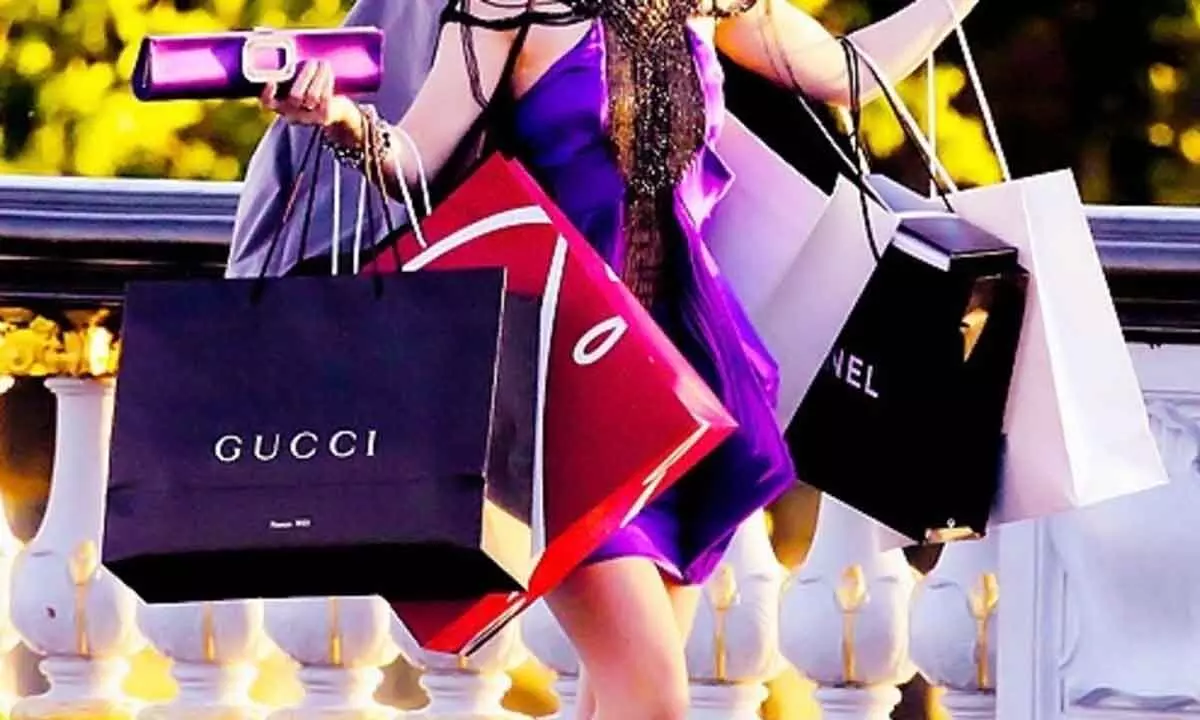Luxury industry looks at India to drive the global market
India’s growth potential is propelled by an increasing interest among young customers
image for illustrative purpose

The ranks of India's ultra-high-net-worth individuals (UHNIs), those commanding fortunes of $30 million or more, are swelling. According to recent reports, the number of millionaires in India is projected to grow by 105% by 2026. These UHNIs are not just affluent; they are the driving force behind the explosive expansion of the Indian luxury market
Taken on the global front, the highest revenue is generated in the United States, which when taken in proportion to the population figures, comes to per person revenue of $5.49 in 2024. In the luxury goods market, 2.6% of total revenue will be generated through online sales by 2024.
As per Bain & Co., the US luxury market is still strong. Europe has managed to recover beyond the 2019 levels, thanks to solid local demand alongside an extra-boost from the US and Middle East tourist shoppers.
However, the new markets of luxury consumption are surprising the industry with South East Asia and Korea topping in terms of growth and potential. India and emerging Southeast Asian and African countries have significant potential as well. Among the rising stars, India stands out for growth potential propelled by an increasing interest and evolving attitudes and behaviors among (young) customers towards luxury goods.
India’s luxury goods market revenue is projected at $7.86 bn in 2024 as it is expected to grow annually by 1.34% (CAGR 2024-2028). According to the Bain and Company report, India's luxury market is expected to grow exponentially to 3.5x the current size by 2030.
Today, India is one of the fastest-growing markets in luxury and has the potential to become the next big thing in the industry. The market's largest segment is prestige cosmetics and fragrances with a market volume of $2.28 bn in 2024.
Talking of marketing luxury, exclusivity is the conceptual key element. This exclusivity is maintained mainly by a high price point and also by consciously limiting sales volumes and outlets.
Reliance Brands Limited (RBL) has partnered with over 60 premium global brands such as Burberry, Giorgio Armani, Valentino and Balenciaga. Aditya Birla Fashion Retail partnered with the niche French luxury department store chain Galleries Lafayette.
More global brands are set to debut in India and large groups like Reliance and Aditya Birla are open to forging partnerships with foreign brands, with Reliance Brands, part of Reliance Retail, in particular, being the most aggressive of the lot.
A booming retail market apart from growing affluence and consumer tastes are among the key reasons for the interest shown by foreign brands in India, analysts said.
The ranks of India's ultra-high-net-worth individuals (UHNIs), those commanding fortunes of $30 million or more, are swelling. According to recent reports, the number of millionaires in India is projected to grow by 105% by 2026. These UHNIs are not just affluent; they are the driving force behind the explosive expansion of the Indian luxury market.
Increase in disposable income- India’s economy is in the midst of a resounding transformation, marked by persistent growth over the past decade.
A recent report of Cushman and Wakefield notes that the supply of new retail space in the country’s top eight cities will continue to be high as developers strive to meet rising demand from retailers.
In the calendar year 2023, 11 shopping malls became operational, covering nearly six million sq. ft. of space across the top eight cities, including Mumbai, Delhi, Bengaluru, Chennai and Kolkata with their
mall supply surpassing the 2019 levels by nearly a million sq ft. This reflects the strong interest from retailers in entering or expanding into the Indian market.
Indian weddings account for a lion's share of luxury spending. At ultra-high-net-worth weddings, expectations remain very high. It's not just the hosting family; every guest gracing the occasion ranks among the world's most eminent and discerning individuals.
In a bid to tap into new demographics and showcase their collections, luxury brands have collaborated with Indian retailers in the recent past. This harmonious fusion has brought a diverse spectrum of luxury brands within arm's reach of Indian enthusiasts.
By 2030, the metaverse is anticipated to be valued at $13 trillion, with luxury and retail accounting for $50 billion. As per the ‘GCC State of Metaverse, and its potential for Luxury Retail’ report, published by Chalhoub Group, 87% of luxury buyers expect their favorite brands to be present in the metaverse, whilst 89% are eager to preview products in the virtual worlds.
They anticipate a project-based test and learn approach in short to midterm (2025), while new Web3 and Metaverse technologies are expected to be integrated into daily business in the long run. Metaverse is called to transform the luxury industry by presenting new consumer touch-points, boosting a unique digital presence, thereby shaping the industry landscape.

